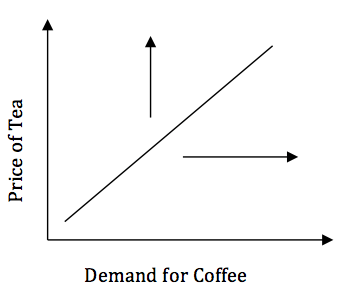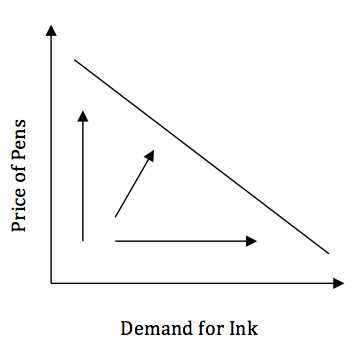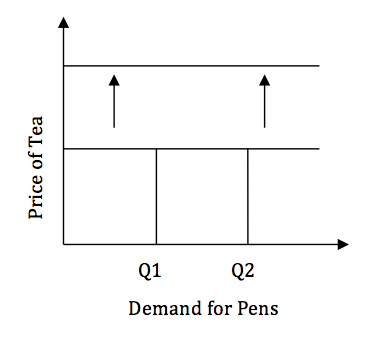Demonstrates How Easy It is for a Customer to Switch to Substitutes
Substitute Products
Products that serves the same purpose as another product in the market
What are Substitute Products?
Substitute products offer consumers choices when making purchase decisions by providing equally good alternatives, thus increasing utility. However, from a company's perspective, substitute products create a rivalry.
As a result, businesses may incur high marketing and promotional costs when competing for market share, which, in turn, reduces operating profits. Some companies are even put out of business due to substitute products significantly outperforming their own offerings.

Substitute Products in the Economy
Every business faces some form of competition, even monopoly industries. Most of the competition comes from substitute products. A substitute product is one that serves the same purpose as another product in the market. Getting more of one commodity allows a consumer to demand less of the other product.
The demand for substitute products shows a negative correlation. That is, consumption of one product reduces or replaces the need for the other. For example, if you are moving from point A to B, you can only use a car, bicycle, or another mode of transportation. However, the demand and pricing of substitute products exhibit a positive correlation. This means if the price of one product increases, the demand for the other increases.
For example, coffee can be said to be a substitute for tea, and solar energy is a substitute for electricity. If the price of coffee goes up, the demand for tea goes up, too, and vice versa. This will only apply if we assume that the price of tea remains constant. It is unlikely to see a person drinking coffee and tea at the same time. However, it is not hard to find an entity that uses both solar energy and electricity.
Impact of Substitute Products
1. A product with several substitutes is hard to price
Since every producer of the substitute product is trying to sell more, the only things they can rely on are branding and pricing . Thus, the prices of products with many substitutes are highly volatile. In a market where there are fewer substitute products, there is a higher probability of earning greater profits.
2. Customers are given a wide variety of products to choose from
The availability of more products can lead to a higher utility. No one single product can satisfy all consumers of a particular type. Therefore, the greater the number of substitutes, the higher the probability of every consumer getting what is right for them.
3. High competition
The greater the number of substitute products in the market, the more rivalry exists in the industry.
4. Low-quality products
In a bid to be the lowest seller in the market, companies try to use the least amount of resources in their manufacturing process to reduce costs. However, this works against the welfare of the consumer, as it sometimes leads to the production of low-quality products.
Factors that Increase the Risk of Substitute Products
1. Low switching cost
Switching cost is the loss or the extra cost you incur from leaving the option you were using for another. For example, if you have been taking notes with a pen but now you want to take them using a video recording device, the switching cost here is high since you will have to buy the video recording device. As a result, you are likely to stick with a notebook and a pen. On the same note, you can switch from one pen to the other easily since the switching costs are low.
2. Price of the product
If a product is priced comparatively, for example in the case of writing pens, there is a higher risk of consumers switching from using one pen to the other unless they are loyal to the particular brand they have been using.
3. Quality of the products
If substitute products are highly differentiated and are of high quality, a consumer is likely to switch to a product that offers better quality. For example, users of aesthetic products like skin lightening creams are very sensitive to quality. They will discontinue using a product once they realize there is a higher quality substitute in the market.
4. Product performance
If two substitute products perform differently when subjected to various conditions, the customer will choose the option that is most beneficial for the particular prevailing condition. For example, in the transport sector, while traveling for shorter distances, most people prefer small vehicles.
On the other hand, while traveling for long distances, commuters may prefer big buses and trains. Many factors may contribute to the preference, but it is mostly due to comfort.
5. Availability of the substitute product
If substitute products are readily available in all corners of the market, there is a likelihood of consumers switching more often.
Factors Affecting the Demand for Substitute Products
Price
If the price of one product rises, the demand for the other product rises since consumers will prefer to pay a lower price if the utility derived is almost the same. If the change in price causes a significant change in quantity demanded, the product is said to be elastic. If the change in price causes a small change in demand, it is called inelastic demand.
For example, if the price of coffee goes up, most consumers will continue to drink it out of habit or addiction, and therefore would be considered to be inelastic demand. Demand elasticity is how sensitive the demand for a good is to the change in other economic variables like price and consumer income.
Graphical Illustrations Between Price and Quantity Demanded for Substitute Products

Two goods that are substitutes show a positive cross elasticity. It means that as the price of product x rises, the demand for the other product rises. As seen in the graph above, when the price of tea increases, the quantity demanded of coffee also increases.

Two goods that complement each other exhibit negative cross elasticity. The increase in the price of one product causes a drop in the quantity demanded of the other product. For example, if pens are very expensive, people will opt to use ballpoints. As a result, the demand for ink will drop drastically.

Two goods that are neither complementary nor substitutes and are independent of each other show zero cross elasticity. The change in the price of one product does not affect the other product pricing, and it remains constant.
Different Types of Substitutability
If a product can be substituted with another, it is called a perfect substitute, for example, the different brands of bread can be said to be perfect substitutes. If a person buys one type, he/she is likely not to buy another bread product.
Imperfect substitute products are the ones that although they can be replaced/substituted with each other, there is a probability there are those who will stick to one product regardless of other factors. For example, bread and cakes can be said to be substitutes, but they are imperfect since some consumers will buy bread, but still want cake additionally.
Final Take: Substitute Products are Good for Consumers
The benefit of substitute products is that they provide consumers with variety when choosing goods to satisfy their needs. On the other hand, companies will incur more costs to develop competitive offerings and promote them as the best in the market.
Since there are always new entrants and the market might not be growing at the same pace, there are risks of obsolete stock even for the best sellers in the market. Thus, companies will adjust by reducing prices or production to prevent it from becoming flooded with too many products.
More Resources
Thank you for reading CFI's guide to Substitute Products. To keep learning and advancing your career, the following CFI resources will be helpful:
- Law of Supply
- Bargain Purchase
- Market Economy
- Bargaining Power of Buyers
Source: https://corporatefinanceinstitute.com/resources/knowledge/economics/substitute-products/
0 Response to "Demonstrates How Easy It is for a Customer to Switch to Substitutes"
Publicar un comentario